GCC real estate faces a more nuanced reality
3 July 2025

The GCC real estate market in 2025-26 is characterised by dynamic growth, largely propelled by ambitious government-led diversification strategies and large-scale masterplanned projects.
Robust sales and significant development pipelines have been interpreted as indomitable market fundamentals across the region, particularly in Saudi Arabia and the UAE.
This year, a more balanced perspective has emerged that reveals new challenges as markets cope with external threats including a weakening global economy and regional geopolitical tensions, combined with domestic challenges such as oversupply and affordability.
Concerns about potential oversupply in certain residential and retail segments, especially in Dubai and Riyadh, are notable, with ratings agencies such as Fitch forecasting price corrections.
With so many real estate projects planned in the GCC region, the construction sector is poised for continued expansion, yet concerns are growing over delivery as capacity is constrained and contractors are becoming increasingly risk averse as their orderbooks fill.
Balancing population growth with project pipelines and the delivery of national visions will be critical in shaping the market’s performance in the future.
Investors and developers will need to navigate these complexities if they are to continue enjoying the success they have achieved in the past four years.
Bahrain
Bahrain’s real estate sector performed steadily in 2024, led by the residential market, which benefitted from demographic growth, improved affordability and supportive government initiatives.
Updated immigration policies such as the introduction of a Golden Visa programme have encouraged more expatriates to purchase properties, which has been stimulating demand.
The price of high-end apartments increased modestly year-on-year, with an increase of 1.4% in 2024, while villa prices remained stable, indicating strengthening demand for premium properties with modern amenities, according to real estate services company Savills.
There was an even greater increase in rental values, which rose by 23% across Bahrain in 2024, with the Capital Governorate accounting for 48% of rental transactions, Savills says.
The country’s commercial office market faced challenges in 2024, however, with limited demand and relatively flat rental growth, despite new developments such as SayaCorp Tower entering the market, Savills reports.
Conversely, Bahrain’s retail sector showed signs of recovery last year, driven by luxury brands opening new stores in Marassi Galleria, increasing foot traffic and demand.
For industrial space, larger warehouses saw a slight increase in rental rates, with a 2.1% year-on-year growth, while rates for smaller units remained stable, Savills says. This sector remains integral to Bahrain’s economic diversification strategy, with further infrastructure investments expected to support demand.
Kuwait
 Kuwait’s residential prices have softened over the past year. Overall residential sales in the first quarter of 2025 declined by 24% quarter-on-quarter, marking the weakest growth since Q2 2024, but only dipped by 2% year-on-year despite an 11.7% rise in transactions, potentially indicating a shift towards smaller or lower-value units in outer areas, according to National Bank of Kuwait (NBK).
Kuwait’s residential prices have softened over the past year. Overall residential sales in the first quarter of 2025 declined by 24% quarter-on-quarter, marking the weakest growth since Q2 2024, but only dipped by 2% year-on-year despite an 11.7% rise in transactions, potentially indicating a shift towards smaller or lower-value units in outer areas, according to National Bank of Kuwait (NBK).
The residential price index remained negative, falling by 1.7% year-on-year in its eighth consecutive quarterly decline, although at a slower pace, suggesting abatement of downward pressure, NBK says.
The slowdown in residential sales in Q1 2025 indicates potential market sensitivity to seasonal factors and a normalisation from strong previous levels.
The fiscal deficit for 2025 is expected to be -4.2% of GDP, up from -3.1% in 2024 on the back of declining oil revenue due to lower prices.
Fiscal pressures could impact government spending on projects if oil prices remain low or decline even further.
Oman
Oman’s real estate sector is experiencing steady growth, supported by the country’s broader economic expansion.
The residential market has registered a 3.6% increase in supply, adding about 38,400 new units in 2024.
Despite the increase, occupancy rates remained stable at 85.2%, with villas and houses experiencing higher demand. The growth in residential supply is essential to meet the projected housing demand gap by 2035, which underscores the need for proactive planning to avoid potential shortfalls.
Oman’s tourism sector has also contributed positively to the real estate market, with guest arrivals at three- to five-star hotels up 3.6%, leading to a 6.1% rise in revenue. Hotel occupancy rates improved to 53.5%, indicating a gradual recovery in demand.
Looking ahead, Oman’s real estate sector is expected to benefit from government initiatives under Vision 2040, which aims to attract investment and foster economic diversification. Anticipated population and workforce growth will drive demand for housing and commercial properties.
Challenges such as market dynamics and potential delays in project completions will require careful management. Overall, the outlook for Oman’s real estate sector remains stable, with opportunities for strong growth in both residential and tourism-
related developments.
Qatar
 Qatar’s real estate market has continued to adapt to evolving demand patterns and macroeconomic conditions, according to real estate consultancy Knight Frank. While some sectors showed resilience, overall trends point to a period of moderation across the residential, commercial and retail segments.
Qatar’s real estate market has continued to adapt to evolving demand patterns and macroeconomic conditions, according to real estate consultancy Knight Frank. While some sectors showed resilience, overall trends point to a period of moderation across the residential, commercial and retail segments.
In the residential sales market, average villa and apartment prices declined by 5% year-on-year. Despite the fall, demand for homes in locations such as Pearl Island and West Bay Lagoon remains stable. Abu Hamour recorded the highest average villa sale price at QR8,587 ($2,359) a square metre (sq m), while the Waterfront led the apartment segment at QR14,300/sq m.
Mortgage activity rose sharply, with a 168% year-on-year increase in Q4 2024, partly attributed to declining interest rates.
Rental rates in the villa segment dropped by 2.6% in 2024, averaging QR15,875 a month, although premium areas such as West Bay Lagoon continued to command higher rents. The apartment rental market remained relatively stable, with luxury developments such as Pearl Island seeing sustained demand and rents for three-bed properties averaging QR15,721 a month.
In the office market, Grade A rents dipped by 2.3%, settling at QR90/sq m. Prime areas like West Bay and Marina District remain in demand, although vacancy rates in secondary locations are contributing to downward rental pressure.
Retail rents declined by 1.5% amid increasing supply and shifting consumer behaviour. Lifestyle and experiential retail developments outperformed, while secondary malls faced growing competition.
E-commerce also continued to gain ground, with online sales surging 32% year-on-year in December 2024.
The outlook for Qatar’s real estate market will depend on the pace of economic diversification … and broader regional stability
Qatar’s hospitality sector saw marked improvements, supported by a 25% rise in tourist arrivals in 2024. Key performance indicators, including occupancy rates and revenue per available room, recorded double-digit growth, reflecting the country’s appeal as a leisure and business destination.
The outlook for Qatar’s real estate market will depend on the pace of economic diversification, infrastructure investment and broader regional stability. While high-end residential and hospitality sectors appear well positioned, other segments may find the outlook more challenging.
Saudi Arabia
 Saudi Arabia’s real estate market has displayed a mixed performance across all sectors, with momentum in residential and tourism-led hospitality markets counterbalanced by slower activity in the office and retail segments, according to real estate agency CBRE’s latest market review.
Saudi Arabia’s real estate market has displayed a mixed performance across all sectors, with momentum in residential and tourism-led hospitality markets counterbalanced by slower activity in the office and retail segments, according to real estate agency CBRE’s latest market review.
In Riyadh, residential sales remained resilient, underpinned by population growth, ongoing reforms and increased demand from Saudi nationals and expatriates. Despite high mortgage rates, key developments such as Diriyah and King Salman Park continue to attract investor attention.
Demand in Jeddah is more subdued, with price growth stabilising after recent surges. Supply constraints and the government’s focus on increasing home ownership to 70% by 2030 remain influential drivers.
The hospitality sector showed significant growth, particularly in the religious and leisure tourism segments. Strong visitor numbers to Mecca and Madina supported high hotel occupancy rates, while developments in Al-Ula and the Red Sea contributed to the expansion of the kingdom’s tourism offering.
Saudi Arabia recorded a surge in international tourist arrivals, reflecting its broader push to diversify the economy through the Vision 2030 strategy. Major global hotel brands continued to announce new projects, signalling long-term confidence in the sector’s prospects.
The office market remained relatively stable, although demand patterns are evolving. In Riyadh, Grade A office spaces remained in demand amid limited supply, while older or lower-grade buildings experienced elevated vacancy levels.
In Jeddah and Dammam, activity was more modest, with tenants preferring flexible leasing arrangements. CBRE notes that public sector activity and government-backed gigaprojects continue to play a significant role in driving office demand.
Retail sector performance varied, with experiential and lifestyle-focused retail formats gaining traction, while traditional malls faced ongoing pressure from e-commerce growth and shifting consumer behaviours. Developments in Riyadh and Jeddah reflect a broader industry shift towards mixed-use destinations with entertainment and leisure at the core.
Looking ahead, Saudi Arabia’s real estate outlook remains cautiously optimistic. Continued progress on gigaprojects such as Neom, Qiddiya and the Red Sea developments are expected to support long-term demand across several asset classes.
However, affordability challenges, financing constraints and evolving global economic conditions could temper short-term momentum.
UAE
 After four strong years, Dubai’s residential market has shown signs of plateauing in 2025.
After four strong years, Dubai’s residential market has shown signs of plateauing in 2025.
The market recorded more than 42,000 sales transactions in the first quarter of this year, reflecting a 10% quarterly decline due to fewer new project launches and seasonal factors, according to property consultant Cavendish Maxwell.
At the same time, year-on-year performance remained strong, with transaction volumes rising by 23.1% and total sales value reaching AED114.4bn ($31bn), a 29.6% increase.
Residential rents increased by 1% quarter-on-quarter and 14.4% year-on-year in Q1 2025, marking the slowest quarterly rise in two years. Gross rental yields averaged 7.3% for apartments and 5% for villas and townhouses in March 2025.
In May, Fitch Ratings forecast a residential price correction in Dubai, starting in H2 2025 into 2026, driven by a record increase in new supply. This is a direct cause-and-effect relationship, where past sales, leading to new projects, are now translating into future supply, which will likely dampen price growth.
Fitch Ratings forecasts a residential price correction in Dubai starting in H2 2025 into 2026, driven by a record increase in new supply
Residential prices surged approximately 60% between 2022 and Q1 2025. Simultaneously, a record number of new property projects were initiated in 2023-24, with a peak delivery of 120,000 units expected
in 2026.
Fitch says that this average 16% increase in supply in 2025-27 will exceed the forecast population growth of about 5%. This imbalance is the direct cause of the predicted 15% fall in residential property prices.
Rental yields are already showing pressure. While a correction is anticipated, Fitch also notes that UAE banks and developers are well-equipped to handle the downturn due to improved leverage and capital buffers. This suggests that the market is maturing, and stakeholders have learnt from previous cycles, potentially leading to a moderate correction rather than a significant crash.
Exclusive from Meed
-
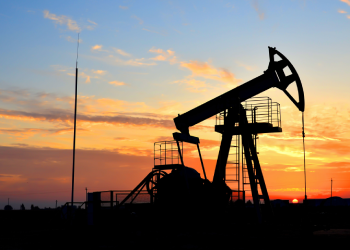 SLB passes evaluation for Kuwait upstream project
SLB passes evaluation for Kuwait upstream project12 December 2025
-
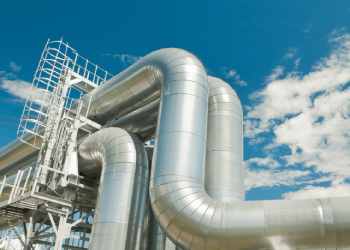 Dana Gas makes onshore discovery in Egypt
Dana Gas makes onshore discovery in Egypt12 December 2025
-
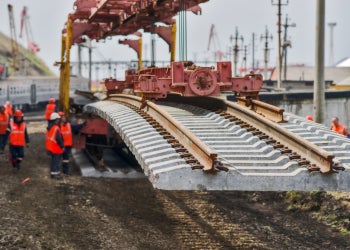 SAR to tender new phosphate rail track section in January
SAR to tender new phosphate rail track section in January12 December 2025
-
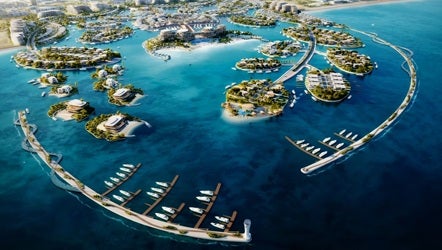 Dar Global to develop $4.2bn Oman mixed-use project
Dar Global to develop $4.2bn Oman mixed-use project10 December 2025
-
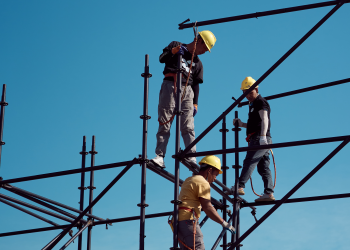 Contract award nears for Saudi Defence Ministry headquarters
Contract award nears for Saudi Defence Ministry headquarters10 December 2025
All of this is only 1% of what MEED.com has to offer
Subscribe now and unlock all the 153,671 articles on MEED.com
- All the latest news, data, and market intelligence across MENA at your fingerprints
- First-hand updates and inside information on projects, clients and competitors that matter to you
- 20 years' archive of information, data, and news for you to access at your convenience
- Strategize to succeed and minimise risks with timely analysis of current and future market trends
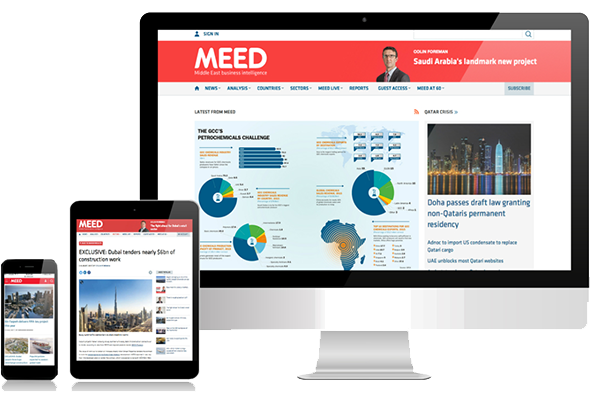
Related Articles
-
 SLB passes evaluation for Kuwait upstream project
SLB passes evaluation for Kuwait upstream project12 December 2025
The US-based oilfield services company SLB, formerly Schlumberger, has passed the technical bid evaluation for a major project to develop Kuwait’s Mutriba oil field.
The Houston-headquartered company was the only bidder to pass the technical evaluation for the Mutriba integrated project management (IPM) contract.
The minimum passing technical evaluation score was 75%.
The full list of bidders was:
- SLB (US): 97%
- Halliburton (US): 72%
- Weatherford (US): 61.5%
The decision was finalised at a meeting of the Higher Purchase Committee (HPC) of state-owned Kuwait Petroleum Corporation (KPC) on 20 November 2025.
According to a document published earlier this year by KOC, the IPM tender for the Mutriba field aims to “accelerate production through a comprehensive study that includes economic feasibility evaluation, well planning and long-term sustainability strategies”.
The field was originally discovered in 2009.
Commercial production from the Mutriba field started earlier this year, on 15 June, after several wells were connected to production facilities.
The field is located in a relatively undeveloped area in northwest Kuwait and spans more than 230 square kilometres.
The oil at the Mutriba field has unusually high hydrogen sulfide content, which can be as much as 40%.
This presents operational challenges requiring specialised technologies and safety measures.
In order to start producing oil at the field, KOC deployed multiphase pumps to increase hydrocarbon pressure and enable transportation to the nearest Jurassic production facilities in north Kuwait.
The company also built long-distance pipelines stretching 50 to 70 kilometres, using high-grade corrosion-resistant materials engineered to withstand the high hydrogen sulfide levels and ensure long-term reliability.
KOC also commissioned the Mutriba long-term testing facility in northwest Kuwait, with a nameplate capacity of around 5,000 barrels of oil a day (b/d) and 5 million standard cubic feet of gas a day (mmscf/d).
Once this facility was commissioned, production stabilised at 5,000 b/d and 7 mmscf/d.
In documents published earlier this year, KOC said that starting production from the field had “laid a solid foundation” for the IPM contract by generating essential reservoir and surface data that will guide future development.
Future output from the field is expected to range between 80,000 and 120,000 b/d, in addition to approximately 150 mmscf/d of gas.
https://image.digitalinsightresearch.in/uploads/NewsArticle/15235579/main.png -
 Dana Gas makes onshore discovery in Egypt
Dana Gas makes onshore discovery in Egypt12 December 2025
Register for MEED’s 14-day trial access
UAE-based Dana Gas has made an onshore gas discovery in Egypt’s Nile Delta area, according to a statement from the company.
The discovery was made by the drilling of the North El-Basant 1 exploratory well, and initial well results indicate estimated reserves of 15-25 billion cubic feet of gas.
Production from the reserve is expected to exceed 8 million cubic feet a day (cf/d) once the well is connected to the national network.
The North El-Basant 1 exploratory well was the fourth well in a campaign of 11 development and exploration wells.
The campaign is being executed as part of the company’s $100m investment programme to support domestic gas production, increase reserves and meet growing energy demand.
Earlier this year, Dana Gas completed the drilling of three wells, adding 10 million cf/d.
The programme is expected to increase long-term production and add approximately 80 billion cubic feet of recoverable gas reserves, according to Dana Gas.
Dana Gas expects to start drilling the fifth well in the programme, the Daffodil exploration well, in the first week of January 2026.
Richard Hall, the chief executive of Dana Gas, said: “The latest drilling success reinforces the value of our investment programme in Egypt and highlights the significant remaining potential within the Nile Delta.”
He added: “By increasing local gas production, the programme will help reduce Egypt’s reliance on imported liquefied natural gas (LNG) and fuel oil and is expected to generate more than $1bn in savings for the national economy over time.”
Previously, Dana Gas signed an agreement with state-owned Egyptian Natural Gas Holding Company (EGas) to secure additional acreage under improved fiscal terms, and to accelerate drilling activity.
Hall said: “We appreciate the strong cooperation from EGas and the ministry, and we remain committed to delivering the majority of our planned programme next year.
“Regular and timely payments from our partners are crucial to sustaining our investment programme in Egypt."
In November, a new gas discovery was made in Egypt’s Western Desert region by Khalda Petroleum Company, a joint venture of state-owned Egyptian General Petroleum Corporation and US-headquartered Apache Corporation.
Egypt also started gas production from the West Burullus field in the Mediterranean Sea, after connecting the first wells to the national gas grid.
The country is currently pushing to increase gas production in order to meet domestic demand and reduce its import bill.
https://image.digitalinsightresearch.in/uploads/NewsArticle/15235552/main.png -
 SAR to tender new phosphate rail track section in January
SAR to tender new phosphate rail track section in January12 December 2025

Register for MEED’s 14-day trial access
Saudi Arabian Railways (SAR) is expected to float another multibillion-riyal tender to double the tracks on the existing phosphate railway network connecting the Waad Al-Shamal mines to Ras Al-Khair in the Eastern Province.
MEED understands that the new tender – covering the second section of the track-doubling works, spanning more than 150 kilometres (km) – will be issued in January.
The new tender follows SAR’s issuance of the tender for the project's first phase in November, which spans about 100km from the AZ1/Nariyah Yard to Ras Al-Khair.
The scope includes track doubling, alignment modifications, new utility bridges, culvert widening and hydrological structures, as well as the conversion of the AZ1 siding into a mainline track.
The scope also covers support for signalling and telecommunications systems.
The tender notice was issued in late November, with a bid submission deadline of 20 January 2026.
Switzerland-based engineering firm ARX is the project consultant.
MEED understands that these two packages are the first of four that SAR is expected to tender for the phosphate railway line.
The other packages expected to be tendered shortly include the depot and the systems package.
In 2023, MEED reported that SAR was planning two projects to increase its freight capacity, including an estimated SR4.2bn ($1.1bn) project to install a second track along the North Train Freight Line and construct three new freight yards.
Formerly known as the North-South Railway, the North Train is a 1,550km-long freight line running from the phosphate and bauxite mines in the far north of the kingdom to the Al-Baithah junction. There, it diverges into a line southward to Riyadh and a second line running east to downstream fertiliser production and alumina refining facilities at Ras Al-Khair on the Gulf coast.
Adding a second track and the freight yards will significantly increase the network’s cargo-carrying capacity and facilitate increased industrial production. Project implementation is expected to take four years.
State-owned SAR is also considering increasing the localisation of railway materials and equipment, including the construction of a cement sleeper manufacturing facility.
https://image.digitalinsightresearch.in/uploads/NewsArticle/15229624/main.jpg -
 Dar Global to develop $4.2bn Oman mixed-use project
Dar Global to develop $4.2bn Oman mixed-use project10 December 2025
Register for MEED’s 14-day trial access
Saudi Arabia-headquartered real estate developer Dar Global has announced that it will develop a mixed-use project in Muscat at an estimated investment of RO1.6bn ($4.2bn).
Dar Global will co-develop the Muscat Marine, Art & Digital District project with Oman's Art District Real Estate Development Company.
The project will cover an area of over 1.5 million square metres (sq m) and will be developed in several phases over 12 years.
The development will comprise a mix of residential communities, cultural venues, marinas, retail spaces, finance and business parks and hotels.
Dar Global, a subsidiary of Dar Al-Arkan, was one of the first Saudi brands to list on the London Stock Exchange.
Dar Al-Arkan established Dar Global in 2017 to focus on developing projects in the Middle East and Europe, including in Dubai, Qatar, Oman, London and the Costa del Sol in southern Spain.
Dar Global has $12bn-worth of projects under development in six countries: the UAE, Oman, Qatar, Saudi Arabia, the UK and Spain.
It completed three developments – the Urban Oasis and Da Vinci towers in Dubai and the Sidra gated community in Bosnia – in 2023.
The company collaborates with global brands including Missoni, W Hotels, Versace, Elie Saab, Automobili Pagani and Automobili Lamborghini.
In Oman, Dar Global is also developing the Aida project. In May, it awarded a contract to develop the villas and apartments as part of the project.
According to an official statement, the construction works are expected to start immediately and the project is slated for completion in 2026.
The main contract was awarded to local firm Al-Adrak Trading & Contracting.
The latest announcement follows the awarding of contracts in June last year for the development of the first phase of the Aida project.
The Aida project is being developed as a joint venture with Omran Group and the first phase is expected to be completed in 2027.
UK analytics firm GlobalData forecasts that the Omani construction industry will expand at an annual average growth rate of 4.2% in 2025-28. Growth in the country will be supported by rising government investments in renewable energy, the transport infrastructure and the housing sector, all as part of Oman's Vision 2040 strategy.
Growth during the forecast period will also be supported by increasing hospitality sector investments, with the government planning to invest RO11.9bn ($31bn) in tourism development projects by 2040 and supporting the construction of several hospitality projects.
https://image.digitalinsightresearch.in/uploads/NewsArticle/15222694/main.jpg -
 Contract award nears for Saudi Defence Ministry headquarters
Contract award nears for Saudi Defence Ministry headquarters10 December 2025

Saudi Arabia’s Defence Ministry (MoD) is preparing to award the contract to build a new headquarters building, as part of its P-563 programme in Riyadh.
MEED understands that bid evaluation has reached advanced stages and the contract award is imminent.
The MoD issued the tender in April. The commercial bids were submitted in September, as MEED reported.
Located to the northwest of Riyadh, the P-563 programme includes the development of facilities and infrastructure to support the MoD’s broader initiatives under the kingdom’s Vision 2030 strategy.
It covers the construction of:
- A new military city featuring the MoD headquarters, support and logistics facilities, a residential and commercial community and space for future command centres
- A National Defence University with a library, conference centre and academic buildings
- A self-sustaining Joint Forces Command compound located approximately 50 kilometres from the military city
The budget for the entire programme is expected to be $10bn-$12bn.
In September 2023, MEED reported that Spain-headquartered Typsa had won two contracts for the project.
The first contract, worth $11.4m, included data management, geographic information systems management, geotechnical reporting and the preparation of the phase one final traffic report. The contract duration was 270 days from the notice to proceed.
The second contract, valued at $10.8m, involved preparing four conceptual masterplans for the P-563 site. It was set to last 255 days from the notice to proceed.
These followed a $290m consultancy contract awarded to Typsa in March of the same year. The single-award task order covered a three-year base period, with an optional two-year extension.
Typsa’s scope of work included programme management planning, communications, change and quality management and cost and schedule tracking.
It also included design requirements, codes, standards and submission requirements, programme guidance, study integration, risk analysis and management, design reviews and a programme-of-work breakdown plan.
 READ THE DECEMBER 2025 MEED BUSINESS REVIEW – click here to view PDF
READ THE DECEMBER 2025 MEED BUSINESS REVIEW – click here to view PDFProspects widen as Middle East rail projects are delivered; India’s L&T storms up MEED’s EPC contractor ranking; Manama balances growth with fiscal challenges
Distributed to senior decision-makers in the region and around the world, the December 2025 edition of MEED Business Review includes:
> AGENDA 1: Regional rail construction surges ahead> INDUSTRY REPORT 1: Larsen & Toubro climbs EPC contractor ranking> INDUSTRY REPORT 2: Chinese firms expand oil and gas presence> CONSTRUCTION: Aramco Stadium races towards completion> RENEWABLES: UAE moves ahead with $6bn solar and storage project> INTERVIEW: Engie pivots towards renewables projects> BAHRAIN MARKET FOCUS: Manama pursues reform amid strainTo see previous issues of MEED Business Review, please click herehttps://image.digitalinsightresearch.in/uploads/NewsArticle/15222401/main.gif



